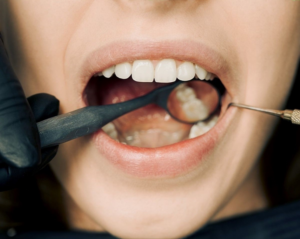What are the extraintestinal manifestations of IBD?
Inflammatory Bowel Disease (IBD) doesn’t just affect the bowel. This is just one part of the body that having IBD affects, contrary to popular myths about IBD being “just a toilet disease”. Crohn’s Disease, for example, typically affects the digestive system anywhere from the mouth to the anus, with the most common and spoke about area affected being the small intestine.
When we speak about “extraintestinal”, we mean areas outside of the intestines, so anywhere else in the body that isn’t the intestine. In this blog post, I am going to address some of the extraintestinal manifestations of IBD from my own experience and from what I have learnt. I have had my IBD diagnosis over 22 years now and symptoms from as young as I remember. I’m not a medical professional, so please don’t take this post as medical advice and as always, do seek medical advice if you have any concerns. You know your body best and as irritated as it can be sometimes, it is still best to trust your gut!
Joint issues
IBD can lead to joint issues. Up to 30% of IBD patients experience issues with their joints such as arthritis (credit to crohnscolitisfoundation.org).
It is worth noting that certain medications for IBD can also cause joint issues and pain. I remember being specifically pained with my joints around my knees mainly and legs when I was on Infliximab (Remicade) and I was told this was a side effect.
Oral ulcers and inflammation
I suffer from mouth ulcers myself and a sore mouth, typically when I am getting run down or I have had smaller flare-ups since surgery in 2011. Aphthous stomatitis is a condition characterised by the repeated formation of non-benign and non-contagious mouth ulcers. This is thought to be an immune response to IBD.
Some people also have oral Crohn’s Disease. Under a microscope, oral Crohn’s looks exactly like Crohn’s in the gut. Common symptoms of oral Crohn’s are facial and lip swelling, mouth ulcers, gum swellings and redness.
Anemia
Iron-deficiency anemia is very common in IBD patients, mainly down to the fact that they struggle to absorb nutrients and their food properly (down to long-term irritation and inflammation) and also some lose blood in their bowel movements. This is where your body does not produce enough red blood cells because the level of iron in your blood is too low.
Skin problems
IBD can also lead to skin problems. Skin problems around the anus can include anal fissures and skin tags. I have had both of these before my surgery in 2011 and remember having to have longer skin tags removed due to the discomfort and irritation they would cause, especially when going to the toilet and having to wipe my bum countless times daily.
Other skin problems IBD can cause are:
- Erythema nodosum – is the most common dermatologic manifestation of IBD which often tends to come and go with inflammation
- Pyoderma gangrenosum – is a rare skin condition that causes painful ulcers. It is not related to gangrene and is non-contagious
- Enterocutaneous fistulas (i.e. perianal) – where an abnormal connection develops between the intestinal tract or stomach and the skin. Contents of the stomach or intestines leak through a fistula to the skin.
Bone problems
IBD and also medication for IBD such as Prednisolone (steroids) can lead to bone problems. People on steroids are often recommended to take calcium supplements to help counteract this. Some bone problems include:
- Osteoporosis – a condition that weakens bones
- Osteopenia – a condition in which the protein and mineral content of bone tissue is reduced but less severely than osteoporosis
- Osteomalacia – softening of the bones
Eye problems
Our eyes can be affected by IBD. Examples of this include having dry eyes and experiencing uveitis. Uveitis is where the middle layer of the eye wall becomes inflamed. This is more common in those who have a problem with their immune system such as IBD.
Kidneys
Stones within the kidneys have been linked to IBD in some cases and other problems with the kidneys, thought to have been caused by IBD include amyloidosis and glomerulonephritis. Amyloidosis is a rare disease caused by a build-up of the protein, amylase, in organs. Glomerulonephritis is damage to the filters in our kidneys, also known as the glomeruli, caused by the immune system attacking healthy tissue.
Gallbladder
Gallstones are a common complication of IBD. If your bile contains too many bile salts, bilirubin or cholesterol, it can harden into gallstones. If IBD impacts the terminal ileum, the inflamed and diseased ileum can no longer absorb bile salts. Cholesterol then builds up and this leads to gallstones.
Liver
Another organ which can be impacted by IBD is our liver. Serious liver disease is said to affect approximately 5% of IBD patients (credit to crohnscolitisfoundation.org).
Liver conditions include:
- Hepatitis – Autoimmune hepatitis can occur from IBD caused from inflammation of the liver itself. In autoimmune hepatitis, a person develops immunity to their own liver cells, which causes the inflammation.
- Primary Sclerosing Cholangitis (PSC) – a chronic liver disease where the bile ducts inside and outside of the liver progressively get smaller due to inflammation and scarring. It is thought to be most common in patients who have chronic IBD in the large intestine (colon).
Summary
IBD is far from being “just a toilet disease” and people can experience any of the above problems, and more, outside of “flare ups” which means that IBD doesn’t necessarily have to be rearing its ugly head in the digestive system for these other symptoms and problems to arise or become an ongoing thing to try to best live with.





